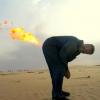Hi Ravi,
As mentioned by Collin .... there are several possibilities and probable solutions, for which you have to study whole system thoroughly. Here I am assuming that you have cooling water network for your facility. The following things you will have to do as primary analysis:
1. Calculate the flow required for each and every user (all the equipment where you are using cooling water).
2. Sum those requirement and compare with the present capacity.
3. If sum is high then requirement of additional flow can be met by following two options
Option-1: increase impeller diameter to its maximum possible provided your motor should meet the power requirement.
Option-2: If option -1 is not meeting your requirement then additional pump in parallel is mandatory.
If sum is less than present capacity then below noted point should be taken care, which may help to meet the capacity with present pump itself.
Note the following:
- Cooling water header hydraulic is very much important to find out the reasons for low discharge pressure of the pump. Carry hydraulic study based on piping.
- There should not be any sort of channeling of the flow such as minimum flow circulation line or utilization of cooling water at low elevation will cause low pressure drop route and maximize (channel) the flow through them, which subsequently result again in low discharge pressure of the pump.
- Try to optimize the requirement at every user. Many times cooling water utilization is in manual mode and manual valves are at their full open conditions, which is some time not required. In this case you are not using your utility effectively. This you may cross check by measuring cooling water outlet temperature at every user (equipment). If it is less than maximum allowable cooling water return temperature then you are not using your utility effectively provided your equipment (mainly heat exchangers) should be design to take that LMTD.
- All the user should be at their optimum capacity.
Conclusion of all the above input is that you should study your system in depth before taking any final decision. Better, you should contact pump manufacturer to make the curve available for that model if those are not available in any of the your department because performance curve is very much important without that you can not check the capability of the present pump.
Hope this may be useful for your study. All the best.
Regards,
Aroon

 FB
FB
















